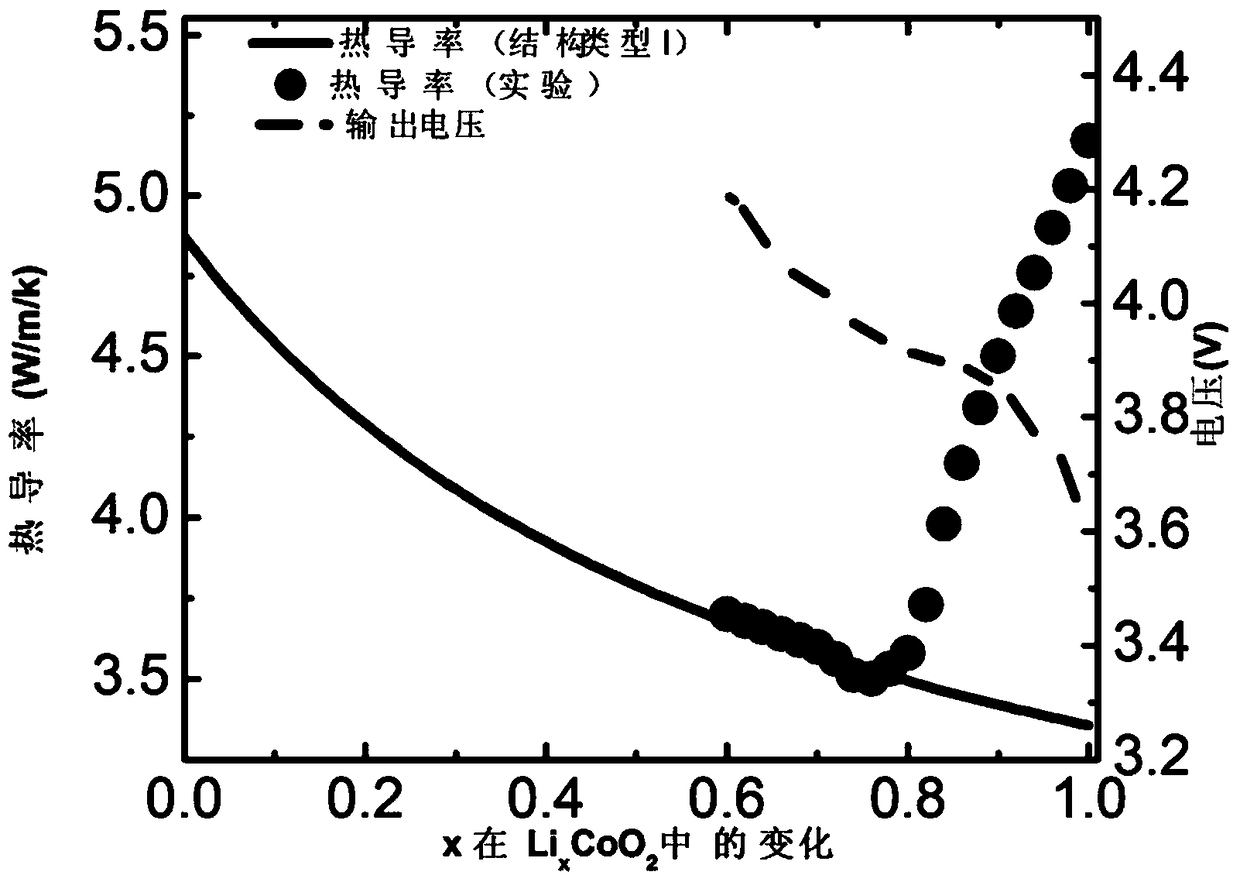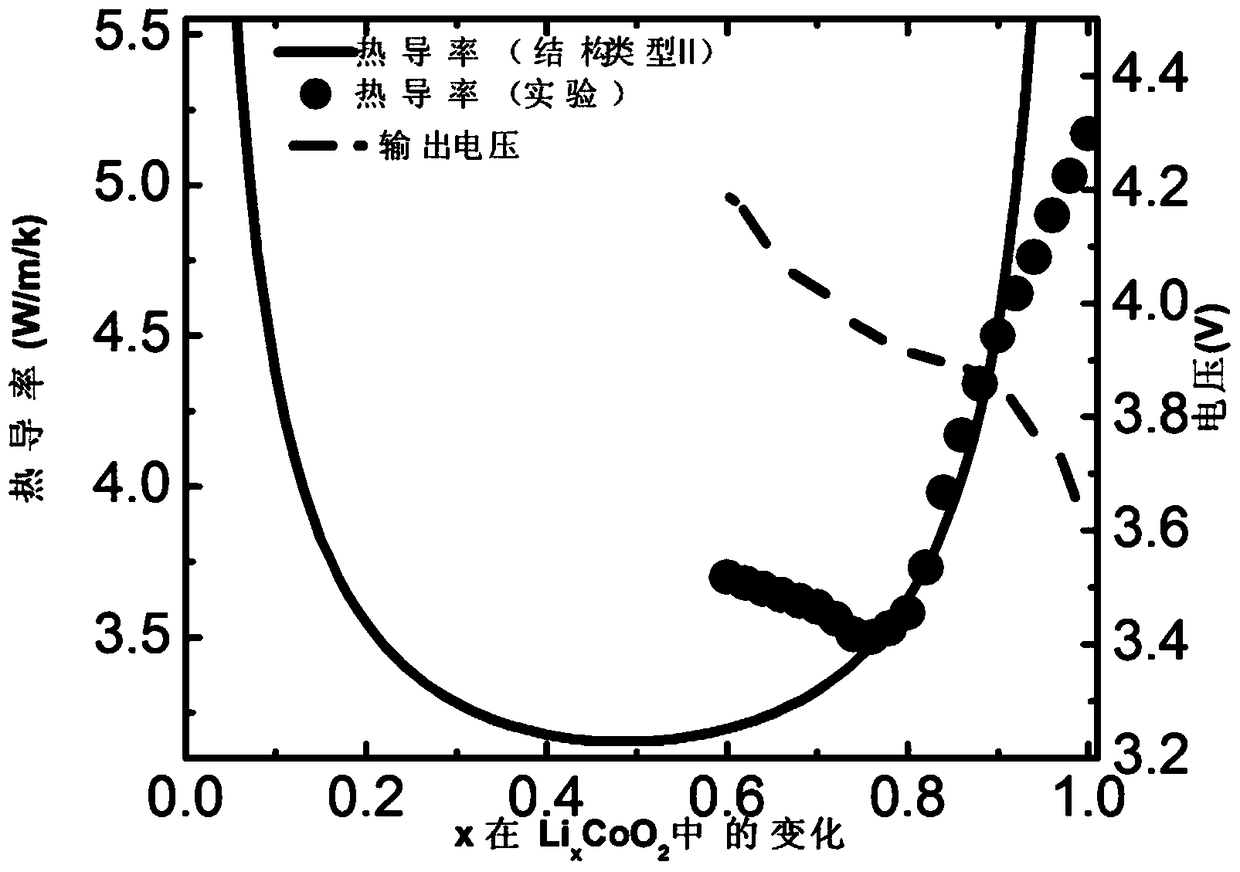A method for analyzing and classifying the thermal conductivity of electrode materials for lithium-ion batteries
A technology for lithium ion batteries and electrode materials, which is used in material thermal analysis, analysis materials, measurement devices, etc.
- Summary
- Abstract
- Description
- Claims
- Application Information
AI Technical Summary
Problems solved by technology
Method used
Image
Examples
Embodiment Construction
[0018] The present invention will be described in detail below in conjunction with the accompanying drawings and embodiments.
[0019] 1) Li cannot be accurately calculated using the structure type I reported in the literature x CoO 2 thermal conductivity
[0020] Select the cathode material Li for lithium-ion batteries x CoO 2 (0figure 1 shown. From figure 1 It can be found that only when the value of x is relatively small (0.6<x<0.76), the theoretical calculation value and the experimental value can be in good agreement.
[0021] 2) Li cannot be accurately calculated using the structure type II reported in the literature x CoO 2 thermal conductivity
[0022] Select the cathode material Li for lithium-ion batteries x CoO 2 (0 figure 2 shown. From figure 2 It can be found from the above that when 0.76<x<0.9, the theoretical calculation value and the experimental result can only be consistent within a specific range of x.
[0023] 3) Li cannot be accurately calcul...
PUM
 Login to View More
Login to View More Abstract
Description
Claims
Application Information
 Login to View More
Login to View More - Generate Ideas
- Intellectual Property
- Life Sciences
- Materials
- Tech Scout
- Unparalleled Data Quality
- Higher Quality Content
- 60% Fewer Hallucinations
Browse by: Latest US Patents, China's latest patents, Technical Efficacy Thesaurus, Application Domain, Technology Topic, Popular Technical Reports.
© 2025 PatSnap. All rights reserved.Legal|Privacy policy|Modern Slavery Act Transparency Statement|Sitemap|About US| Contact US: help@patsnap.com



